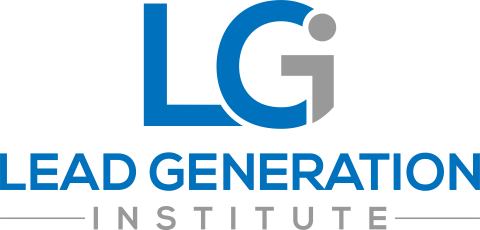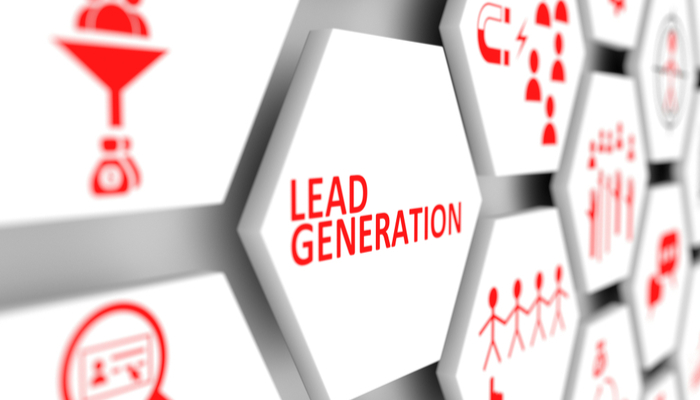A lead should never be looked at as a random potential customer. A lead is a customer who’s just one step away from making a purchase. What you need to do is to grab their attention, prove to them that your product or service will solve their problem, and deliver results.
Generating this sort of quality leads is the backbone of every good B2B marketing strategy. Establishing a strong pipeline of such leads will ensure a steady growth rate. B2B lead generation is not about chasing the “secret strategy” that will result in tons of leads. Creating a lead generation strategy for your business is about understanding what strategies already exist in the market, and which combination of tactics will work best in terms of what you hope to achieve.
Any disciplined B2B marketer knows what to expect from different channels and strategies. They will typically use a combination of both outbound and inbound tactics to establish a steady pipeline. With outbound strategies, you’ll experience quicker growth in numbers of leads. Inbound is more about establishing lasting credibility and rapport, which will generate more qualified leads over time.
Below, we’ll be looking at some of the most effective lead generation strategies for B2B marketing that were tried and tested by many companies around the world.
Email Marketing
Email marketing is almost as old as the internet itself. For more than two decades, email has trumped most other B2B lead generation strategies – this is the reason for its being first on this list. Email is often what connects CRM and marketing automation, two solutions used by many marketers today.
In any case, email opt-in is still the starting point for lead generation and the core for lead nurturing. In 2014, it was declared the best B2B digital marketing channel, and two years later, it was seen to be at the top of digital channels for driving sales and revenues of B2B marketers in the United States.
Numerous technological advancements such as predictive analytics, automated lead scoring, and AI algorithms have only added to the importance that email marketing has in terms of lead generation and nurturing. Email marketing was shown to generate upwards of around $44 per every dollar spent on email marketing.
Marketing Automation
Though not so widespread as some of the other entries on this list, marketing automation will do wonders for your lead generation, which is particularly true for organizations that typically have an extended sales cycle. In these sorts of cases, long-term lead nurturing will be required.
Statistics show that only about 25% of leads will convert into buying customers within the first year, while the remaining 75% will require two or even three years before they complete their respective buyer’s journeys. Marketing automation is a way of helping you nurture those leads who are not sales ready through to purchase, thus sparing you from wasting 75% of your lead generation budget.
In simple terms, marketing automation involves using software to automate many of the marketing and lead generation tasks that would, otherwise, need to be done manually. In general, it deals with email marketing, allowing you to automate this process from the initial opt-in, follow-ups, and behavioral email. This means that when a potential customer opts to receive your emails, you’ll be able to send them a sequence of messages specifically designed to increase their interest and nurture them through the entire sales funnel. This process is automated and is based on the lead’s behavior.
Every campaign you run through this software will be controlled by an automation workflow, which is a series of rules that control what type of content the recipient receives and what actions they need to take to receive them.
If, for instance, a customer visits a specific page on your site, you’ll send them content related to the subject that interested them. Similarly, if someone makes a purchase, you can send them messages that will encourage them to make other purchases (Cross-sell or Upsell), sign a service agreement, or complete any other objective you wish.
In other words, marketing automation will allow you to respond as a real person would, making it a more effective lead generation and nurturing process overall. In the meantime, your marketing team can focus on other big-picture items like content creation and conversion rate optimization.
Sales Automation
Somewhat similar to marketing automation, sales automation deals predominantly with email. One of the main differences, however, is that sales automation is designed to send a relatively low volume of automated text emails on behalf of the salesperson using their existing email account and service provider. This means you can send anywhere from a few emails to a few thousand emails per day. Nevertheless, it’s recommended that you send less than 400 such emails per day to avoid any potential blacklisting. It’s also advisable that you work your way up to 400 by gradually increasing the volume over time. Example: 25 emails day one, 50 emails day two, 100 emails day three, 200 emails day four, and ultimately 400 emails on day five and beyond.
With professional sales automation services, you’ll also have access to a high degree of personalization, subject lines, and messaging capabilities designed to enhance your lead generation, open rates, conversions, and click-through rates.
Also, you’ll have access to millions of B2B contact records, automated task assignments, reminders, notifications, and other similar capabilities, all designed to automate and streamline the sales prospecting process, increase the number of responses and engagements, as well as identify new opportunities, and close more sales.
Event Marketing
Event marketing has been one of the best lead generation tactics for a long time. However, event marketing leads come at a high cost per lead when you consider sponsorship fees, exhibit booths, shipping, not to mention travel expenses for your staff. It’s imperative to upload all leads (sales ready or not) into your CRM and marketing automation platforms for long term lead nurturing.
These marketing strategies are predominantly used to attract new leads, earn new conversions, and increase product visibility, among other such benefits that add to the bottom line.
Marketers often look at event marketing as a means to generate new leads and forget to invite their current customers and prospects to these events. Marketers and sales executives should make sure to invite current customers and prospects to these events. Any time you can get face to face with either a prospect or customer, it is an opportunity to build stronger relationships and increase the lifetime value of that opportunity.
Measuring success at marketing events can be done by observing the total number of sales as well as using attendance/engagement metrics, follow-up activities, and social listening in the form of social media mentions about the event.
Webinars
As a subset of event marketing, webinars are among the most cost-effective lead generation strategies. They are also among the fastest growing marketing techniques for B2B marketers. They’re especially effective for lead generation, lead nurturing, and for establishing you as a thought leader in the industry.
Since these are online events, much of the overhead costs associated with other events will be eliminated. You won’t have to pay your staff T&E. Your office will still run at peak productivity. There won’t be any shipping, transportation, accommodation costs, etc. Also, being online, you’ll typically have access to an even larger target group than the people who would make it to a physical event.
Webinars are also an interactive medium, meaning that viewers will be involved, will ask questions, and provide feedback. Statistics show that around 20% will also provide information into their purchase plans. Also, since these events are independent of place and time and can be accessed on-demand, they make an excellent medium for sharing and retaining knowledge.
Shawn Elledge of Sales Lead Automation, who has produced over 110 webinars, suggests you focus your webinars on current or hot topics in your industry and invite relevant thought leaders from well-known brands as guest speakers. Your registrations will suffer if you only have one speaker at your company who has the job title of VP of Sales. If prospects think your webinar is a sales pitch, they will not register. Make sure to provide as much helpful information as possible and avoid the urge to pitch your products and services.
Content Syndication
Content marketing is a tremendous inbound lead generation strategy, and there’s no denying it. Nevertheless, its effectiveness can be greatly increased by making use of content syndication. Content syndication is a way of publishing content in different locations other than your website and social channels, increasing your reach, connecting with a larger audience, improving SEO, and capturing more leads.
Content syndication works by teaming with other brands to share content using different tactics. Among these, we can include things such as guest blogging, content swapping, co-marketing, press releases, PPC promotions, etc. Each of these methods has its advantages, and their level of success is highly dependant on the channels, partners, and the type of content you use. These tactics should also be in line with the goals you want to achieve.
While this B2B lead generation strategies list is by no means exhaustive, we believe these methods to be the most effective. Some honorable mentions should also go to PPC advertising, LinkedIn Ads, search marketing, and direct mail. For more information on lead generation best practices, please feel free to contact us directly or subscribe to our newsletter.




